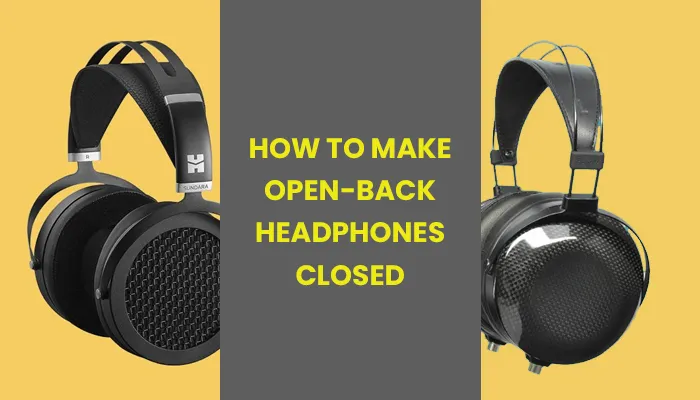You just bought a slick new pair of open-back headphones to get the best audio experience possible. The spacious soundstage and crystal-clear highs are amazing, but the noise leakage is not so great for listening in public or an open office.
Rather than shelling out more cash for a pair of closed-back cans, here’s how you can easily modify your open-backs and make them closed, all for under $20. In just a few simple steps, you’ll be enjoying your new headphones in private without broadcasting your guilty pleasure tunes for everyone else to hear.
Time to turn up the volume – your secret’s safe with these DIY closed-back modded headphones.
Why You May Want to Convert Your Open-Backs
Open-back headphones are great for an open, spacious sound, but they leak sound in and out. Maybe you have roommates or like to listen in public, and the sound bleed is annoying. Converting open-backs to closed-backs can solve this problem.
Buy closed-back headphone pads. Foam or leather pads that fully enclose the driver will contain the sound. Look for pads specifically made for your headphone model. If unavailable, measure the driver and cut generic pads to fit.
Use sound-absorbing material. Place weatherstripping, felt pads, or craft foam inside the ear cups to muffle sound. Press the material firmly around the edges of the ear cups to seal any gaps.
Seal the ear cups. Run a bead of silicone caulk, weatherstripping tape, or craft glue around the edge of the ear cups to close any air vents or sound ports. Wipe away excess that squeezes inside.
Converting your open-backs to closed doesn’t have to be complicated. With some simple modifications, you can enjoy private listening without sacrificing your headphone’s natural sound. Now you can rock out in peace wherever you please!
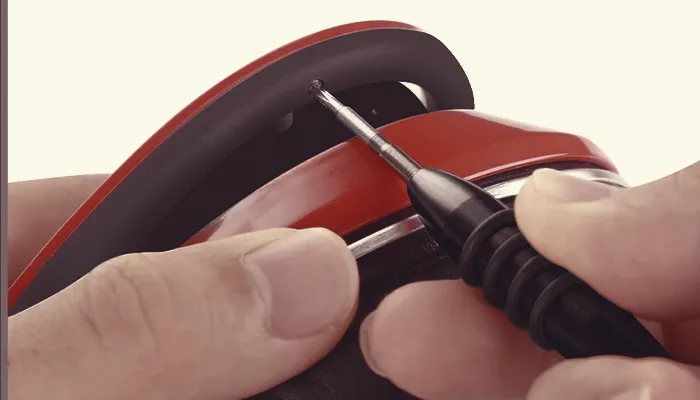
Materials Needed to Convert to Closed-Back
To convert your open-back headphones to closed-back, you’ll need a few supplies.
Materials
- Felt or sound-absorbing pads: These help muffle outside noise and improve bass response. You’ll want pads that are at least 1/4-inch thick.
- Adhesive: Double-sided tape, fabric glue, or a strong craft glue will securely attach the pads to your headphones. Make sure it’s suitable for bonding fabric and plastics.
- Scissors: Sharp scissors will make cutting the felt pads to size easy.
- Optional: extra padding like cotton balls or polyfill and a staple gun for added sound blocking.
With these essentials, you’re ready to transform your open-back cans to closed-back. The process only takes about 15-30 minutes, so in no time you’ll be jamming in peace without bothering your roommates or eavesdropping neighbors. Pretty soon those open-backs will be a distant memory!
Next up, we’ll go over how to properly attach the pads to seal and soundproof your headphones. The key is taking your time and paying attention to details. A little patience will yield big rewards in the form of an immersive listening experience free of outside distractions.
Step-by-Step Guide to Modifying Open-Back Headphones
To modify your open-back headphones and make them closed, follow these steps:
Gather Your Supplies
You’ll need a few basic supplies:
- Soft cloth or leather ear pads
- Adhesive or double-sided tape
- Scissors
- Pen or marker
Remove the Original Ear Pads
Gently peel off or unscrew the ear pads attached to the open-back headphones. Be very careful not to damage the speaker elements inside. Clean the area around the speakers with a soft, damp cloth to remove any debris. Let air dry completely.
Trace and Cut the New Ear Pads
Place one of the new ear pads over the open area of one headphone speaker. Use a pen or marker to trace the shape onto the back of the ear pad. Remove and cut out the shape with scissors. Repeat the same process for the other ear pad.
Attach the New Ear Pads
Apply adhesive or double-sided tape around the edge of one speaker. Place the cut ear pad onto the speaker, pressing firmly so it sticks in place. Repeat the same process for the other ear pad.
Test and Enjoy!
Put your now closed-back headphones on and play some music to test the new ear pads. The sound should be slightly more bass-heavy and isolated. Your modified headphones are ready to enjoy! With some basic modifications, you’ve transformed your open-back headphones into closed and improved their functionality.
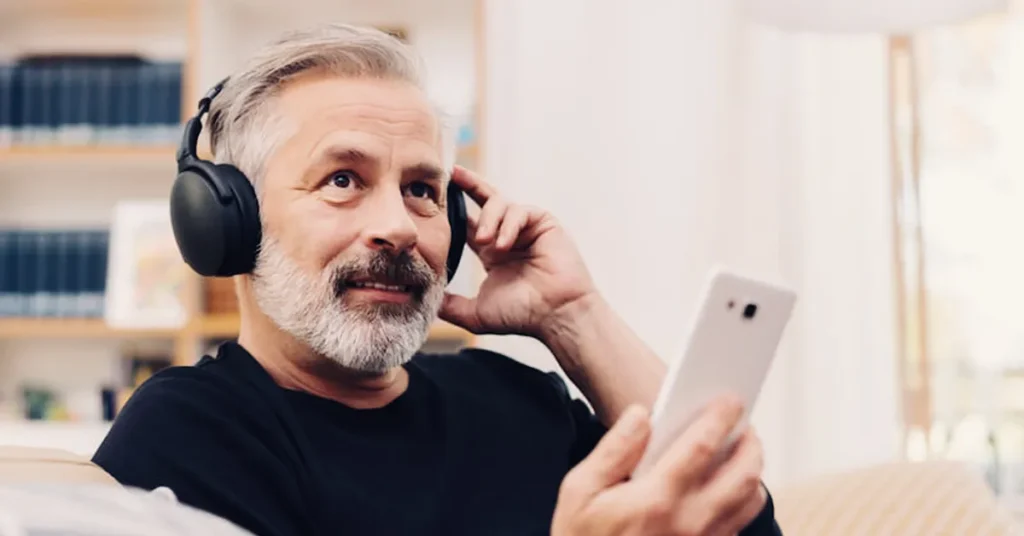
Testing the Sound Quality and Fit of Your Closed-Back Headphones
Now that you’ve converted your open-back headphones to closed-back, it’s time to test them out. Fire up your favorite music streaming service or audio files on your device and try them on.
How’s the sound quality? Closed-back headphones typically provide more bass and noise isolation versus open-back models. The trade-off is that the sound may seem more confined.
Take note of how full the bass sounds and if higher frequencies like vocals and instruments still come through crisply. If anything sounds off or muffled, you may need to make some tweaks to the cups or padding.
How’s the fit? Proper fit and comfort are key to enjoying your headphones. Closed-back models can feel more snug around the ears due to their sealed design.
Make sure the cups fully enclose your ears but don’t cause discomfort. The headband should feel secure but not too tight. If needed, you can adjust the headband or swap out the ear pads for a different size or material.
Try moving your head from side to side or walking around to ensure the headphones stay in place. If they feel loose or slip around, you may need to tighten the headband adjustment sliders or consider a different headband pad for added grip.
Overall, how’s the experience of listening with your “new” closed-back headphones? If you’re satisfied with the sound and fit, congratulations – you’ve successfully converted your open-back headphones to closed-back!
If not, don’t worry – with some additional tweaks you’ll be enjoying your headphones in no time. The key is making small changes and re-testing until you find what works best for you.
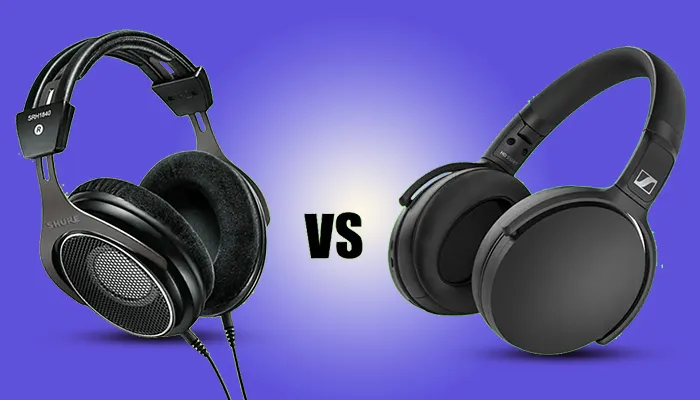
Understanding Open-Back vs Closed-Back Headphones
side-by-side comparison table highlighting the key features of open-back and closed-back headphones:
| Feature | Open-Back Headphones | Closed-Back Headphones |
|---|---|---|
| Sound Leakage | More sound leakage due to open design, not suitable for quiet environments or public spaces. | Minimal sound leakage, suitable for use in public and quiet places. |
| Sound Isolation | Poor sound isolation, lets in external noise. | Better sound isolation, blocks out external noise to some extent. |
| Soundstage | Wide and spacious soundstage, provides a more natural, immersive audio experience. | Narrower soundstage, sound feels more enclosed and focused. |
| Bass Response | Usually has a more natural and open bass response. | Can have a tighter and more pronounced bass due to closed design. |
| Comfort | Generally more breathable and comfortable for extended use. | Can get warmer during prolonged use, might cause discomfort. |
| Portability | Typically larger and bulkier, less portable. | More compact and portable, suitable for on-the-go use. |
| Durability | Exposed drivers are vulnerable, requires careful handling. | More durable due to enclosed design, better protection for drivers. |
| Usage Scenarios | Ideal for home use, studio monitoring, and critical listening. | Suitable for commuting, travel, and recording in noisy environments. |
| Price Range | Varied, but high-end models can be expensive. | Wide range, affordable options available for various budgets. |
| Customizability | Limited customization options due to the open design. | Can have customizable ear pads, cables, and other accessories. |
The choice between open-back and closed-back headphones depends on individual preferences and specific use cases. Open-back headphones are favored by audiophiles and professionals seeking a natural and immersive audio experience, while closed-back headphones are popular for their portability and noise isolation, making them suitable for travel and outdoor use.
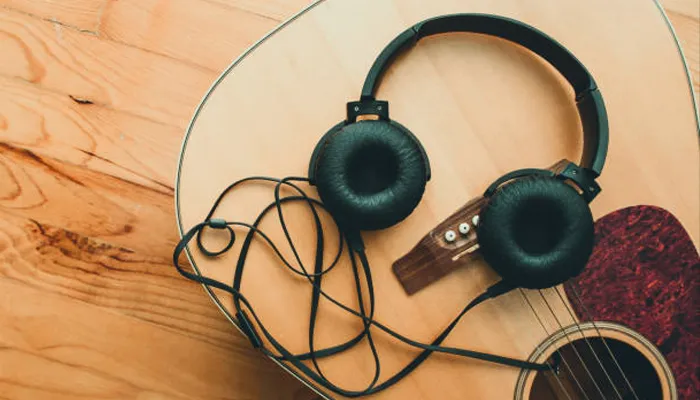
Benefits of Converting Open-Back Headphones to Closed-Back
Converting your open-back headphones to closed-back comes with several benefits.
Improved Noise Isolation
Closed-back headphones block outside noise from entering the earcups, providing better noise isolation than open-back models. This allows you to listen at lower volumes since less ambient noise is leaking in, which can help prevent long-term hearing damage. The improved noise isolation also means you’ll experience less distraction from environmental sounds.
Reduced Sound Leakage
Sound leakage refers to the amount of audio that escapes from the earcups of headphones. Closed-back headphones prevent the audio from leaking out, so people around you won’t be able to hear what you’re listening to. This makes closed-back headphones ideal if you like to listen to music in public places or at work.
Increased Bass Response
The sealed design of closed-back headphones allows for improved bass performance. The bass frequencies have nowhere to go, so they reverberate within the earcups, producing a fuller low-end response. If you prefer headphones with an emphasized bass sound, converting to closed-back can help achieve that.
Customized Sound
The closed earcup design also provides an opportunity to customize the sound to your preferences using EQ settings. You can boost the bass, reduce the treble, or make other tonal adjustments without the sound leaking out. This allows for a personalized listening experience tailored to your tastes.
Converting open-back headphones to closed-back may require some modification but can transform the listening experience by providing better noise isolation, reduced sound leakage, improved bass response, and a customized sound. For many, the benefits of a closed-back design are worth the effort.
FAQs
Have some questions about making your open-back headphones closed? Here are some common questions and answers:
Conclusion
So there you have it, a few simple steps to turn your open-back headphones into closed-back cans. By adding some padding, sealing up the cups, and damping the sound inside, you’ve given your headphones an upgrade in privacy and bass.
Now you can crank up the volume without bothering anyone nearby and really feel those deep lows. Your roommates or coworkers will appreciate the consideration, and you’ll appreciate being able to get lost in your music without distractions.
While open-backs have their place for critical listening at home, sometimes you just want to shut out the world and escape into your own auditory world. With these mods, your open-back headphones are ready to provide the perfect closed-in listening experience whenever you want.
- Charging Bluetooth Headphones During Use: Is It Possible? - January 9, 2024
- Why Over-Ear Headphones Best for Hearing Health? (7 Reasons) - December 12, 2023
- Fixing the Bose Earbuds Not Charging in Case Problem: Solutions That Work - November 24, 2023
